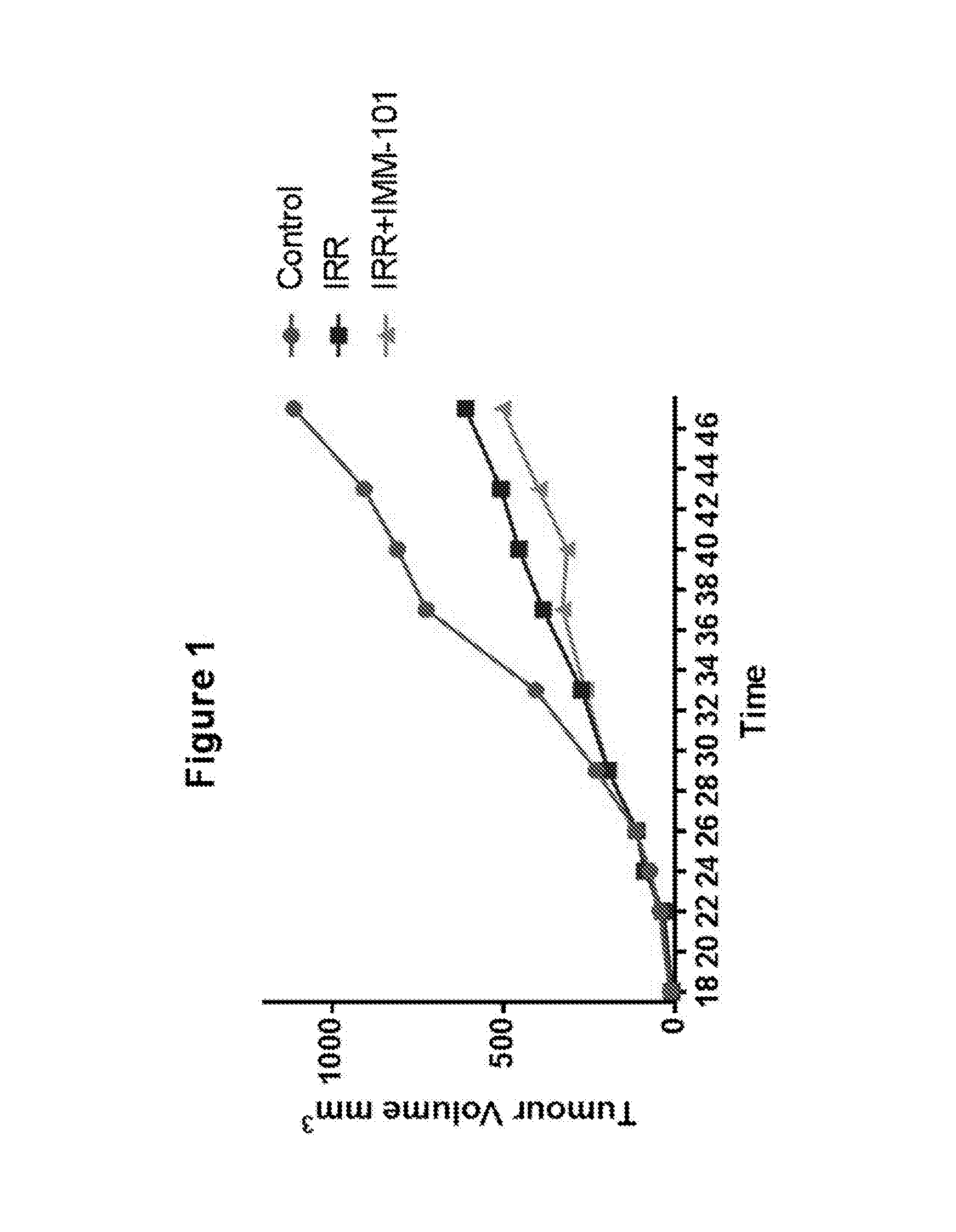Immunogenic Treatment Of Cancer
a cancer and immunomodulatory technology, applied in the field of cancer therapy, can solve the problems of cancer inflammatory response in cancer, adverse effect of current cancer treatment success, and cancer risk factors, and achieve the effect of reducing the toxicity of chemotherapeutic agents, and reducing the risk of cancer
- Summary
- Abstract
- Description
- Claims
- Application Information
AI Technical Summary
Benefits of technology
Problems solved by technology
Method used
Image
Examples
example 1
[0081]To investigate the invention, we conducted a study in female Balb / c mice injected subcutaneously with an inoculum of Renca tumour cells and treated with irradiation therapy in combination with IMM-101 (Mycobacterium obuense, rough strain, heat-killed).
[0082]Briefly, adult mice were maintained under SPF conditions at controlled temperature (23±2° C.), Humidity (45±10%) and photoperiod (12 hr light / 12 hr dark). They were provided with water and food at libitum. Mice were individually tagged for identity. At day 0, mice received subcutaneously an inoculum of 105 Renca tumour cell in a 0.2 ml volume of RPMI 1640 medium in their right flank. Tumour establishment and growth was monitored daily. Once tumours became palpable (100-200 mm3 on day 25) mice were randomised and divided into three groups. Group 1 was left untreated. Group 2 and 3 received the following treatments: Group 2) two cycles of one irradiation of the tumour at 2Gy / day every two days for a total of three irradiation...
example 2
[0085]An investigative study of a preparation of heat-killed whole cell M. obuense (IMM-101) in combination with radiation-induced immunogenic tumour necrosis in patients with previously treated colorectal cancer was conducted in patients according to the protocol described in Table 1. Patients were subjected to a dose of M. obuense IMM-101 on the same day as establishment of the baseline and insertion of the fudicial seeds required for correct focusing of cyberknife energy; subsequent SBRT using cyberknife technology to induce tumour necrosis was administered at day 14, together with a further dose of M. obuense (IMM-101). The patients received a further dose of M. obuense (IMM-101) on day 28 and then continued to receive M. obuense (IMM-101) doses at fortnightly intervals between week 8 and 12, inclusively, whereupon the dose frequency was reduced to monthly throughout the remaining period of the year-long study. Patients were then assessed for tumour regression and disease stabil...
PUM
| Property | Measurement | Unit |
|---|---|---|
| Time | aaaaa | aaaaa |
| Time | aaaaa | aaaaa |
| Mass | aaaaa | aaaaa |
Abstract
Description
Claims
Application Information
 Login to View More
Login to View More - R&D
- Intellectual Property
- Life Sciences
- Materials
- Tech Scout
- Unparalleled Data Quality
- Higher Quality Content
- 60% Fewer Hallucinations
Browse by: Latest US Patents, China's latest patents, Technical Efficacy Thesaurus, Application Domain, Technology Topic, Popular Technical Reports.
© 2025 PatSnap. All rights reserved.Legal|Privacy policy|Modern Slavery Act Transparency Statement|Sitemap|About US| Contact US: help@patsnap.com

